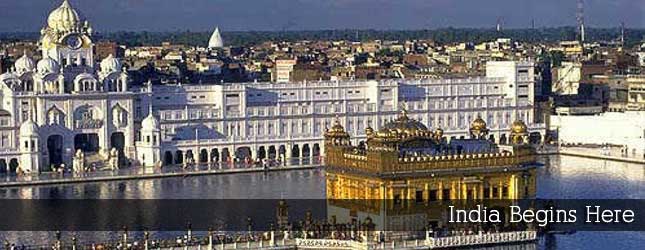 |
Punjab - Land of Five Rivers / Granary of India
Punjab, a North Indian state, is known for its �five rivers�, for Sikh Shrine the Golden Temple and for unique Punjabi culture. Punjab forms the part of larger Punjab consisting of vast territories of eastern Pakistan and northern India. The name Punjab refers to �(The Land of) Five Rivers� � including the Jhelum, the Chenab, the Ravi, the Sutlej, and the Beas � the tributaries of the Indus River. Possessing a splendid history and affluent cultural, Punjab is home to the followers of Sikhism, Hinduism and Islam with major population of Sikhs.
Its borders are made by the states of Himachal Pradesh in the east, Haryana in the south and southeast and Rajasthan in the southwest, as well as Jammu & Kashmir in the north. It also borders Pakistani province of Punjab in the west. Chandigarh, a Union Territory, is the capital of Punjab as well as other North Indian state of Haryana.
Its borders are made by the states of Himachal Pradesh in the east, Haryana in the south and southeast and Rajasthan in the southwest, as well as Jammu & Kashmir in the north. It also borders Pakistani province of Punjab in the west. Chandigarh, a Union Territory, is the capital of Punjab as well as other North Indian state of Haryana.
How to Reach
- Air: The major airports in Punjab are Amritsar, Chandigarh and Ludhiana, operating domestic flights to all the parts of India. Amritsar is an international airport in Punjab, connecting it to other parts of the world.
- Rail:BThe state has an extensive railway network, linking it to most of the parts of the country, through major railheads at Chandigarh, Ludhiana, Amritsar, Ferozepur, Jalandhar and Pathankot.
- Road:The state has well networked roads, connecting even its remotest village in the state to the rest of the country. Punjab is very well linked to the neighboring state of Delhi, Haryana and Rajasthan.
Best Time to Visit
- The best time to visit Punjab is from October to March when the weather is cold and pleasant in winters with temperature going down to 13 degree C.
- Its summers stay from April to June with hot and dry climate and temperatures soaring to 45 degree C.
- The monsoons remain here from July to September with rainfall bringing relief from heat, and annual rainfall ranging from about 49 inches (1,250 mm) to 14 inches (360 mm).
Major Attractions in Punjab
- Golden Temple : The world's most revered Sikh pilgrimage is the Golden Temple in Amritsar. The holy Guru Granth Sahib is enshrined with the edifice of gold-laden dome and the marble base.
- Anandpur Sahib : Several major Gurudwaras are found in the historic town lying on the left bank of Sutlej River, that was founded by Guru Teg Bahadur. This is the place where Guru Govind Singh created Khalsa in 1699 at Gurudwara Keshgarh Sahib.
- Jallianwallah Bagh : A major milestone in India�s freedom struggle history, Jallianwallah Bagh commemorates the killing of hundreds of men, women and children in the brutal firing by the British Police in 1919.
- Sheesh Mahal : The majestic palace constructed by Maharaja Narinder Singh with terraces, gardens, fountains and an artificial lake, houses in its gallery the antique paintings, bronzes, sculptures and portraits of the Maharajas of Patiala.
- Wagha Border : The Indo-Pak Border has its own elegance. Tourists take the patriotic breathe when in the evening there takes place the change of guard among the Indian Border Security Forces.
Fairs and Festivals
- The Rauza Sharif 'Urs' (May)
- The Fair of Baba Sodal (August/September)
- Shaheedi Jor Mela
- Rural Sports in Punjab
- Rural Sports (February)
- Muktsar Fair (January)
- Lohri (January)
- Hola Mohalla (March)
- Haribhallabh Sangeet Mela (December)
- Gurupurabs (November)
- Chhapar Fair (August/September)
- Basant Panchami (March)
- Baisakhi (April)


